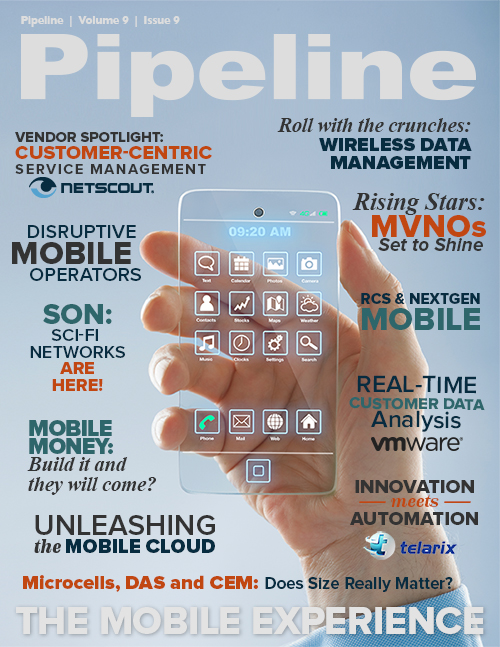Roll with the Crunches: Wireless Data Management
By: Tim Young - do not use (default)

When I visualize data traffic, my imagination runs to that mainstay of the commercial internet’s early days, “the information superhighway.” In my mind’s eye it’s a gleaming stream of photons traveling on a carefully constructed freeway that would make the German autobahn look like a downtrodden cow path. It’s clean, well maintained and flawlessly controlled.
However, sometimes the reality of data traffic is less “uber-autobahn” and more “downtown Dhaka.” It’s chaos. And that chaos is only getting more severe as more data enters the fray. Ofcom, the United Kingdom’s government-approved regulatory and competition authority, estimates that by 2030 demand for mobile data could be 80 times what it is today, while wireless communications service provider (CSP) O2 UK has publicly stated it could run out of spectrum by 2014 if it doesn’t shift around its growth strategies.
None of this is particularly shocking to industry observers, given the incredible appetite for data that users have developed over the last few years. The devices that enable that appetite continue their long, steady march into the mainstream: Mobile-data analytics company Arieso recently released its list of the top 10 mobile devices in terms of data consumption, and smartphones, not tablets, were most heavily represented (wireless dongles weren’t included in the study), with devices like the iPhone 5, Samsung Galaxy S III and HTC Sensation XL occupying 6 of the 10 slots. Tablets took up three of the remaining slots, and one so-called “phablet” rounded out the list. (Best represented by the ubiquitous Samsung Galaxy Note, the smaller-than-a-tablet, larger-than-a-phone device has seen tremendous uptake in developing markets, where it’s being embraced as an agile compromise for users who can’t or won’t spring for two devices and the associated connectivity charges.)
And then there’s the cloud. The recent update of cloud platforms is a boon for many, but the constant interchange of data to and from handsets — data that once would have been stored locally — adds traffic to an already taxed network.
“Stop the ride. I want off.”
With widespread data use becoming so mainstream, and the flood of data-digesting devices not showing any signs of abating, there’s little else to do but try to find ways of dealing with the crunch. Fortunately, there are lots and lots of answers to the question of how to handle the bandwidth squeeze.
More spectrum
One solution is for CSPs to grab more spectrum, thereby allowing them to accommodate more data activity. This is being pursued on multiple fronts, of course. As old broadcast technologies reach
the end of their usefulness, government authorities are holding spectrum auctions all over the world. Ofcom, for instance, will be auctioning off the 800MHz band that was the domain of analog TV
signals in the UK before the move to digital rendered it obsolete. The organization also hopes to eventually free up the 700MHz band by shifting frequencies for digital terrestrial
television.
Meanwhile, the Indian government just announced it’ll be auctioning off 700MHz spectrum in 2014, with auctions for 800, 900 and 1,800MHz spectrum in select markets to be held later this year.
Similar sales ring the globe.






















